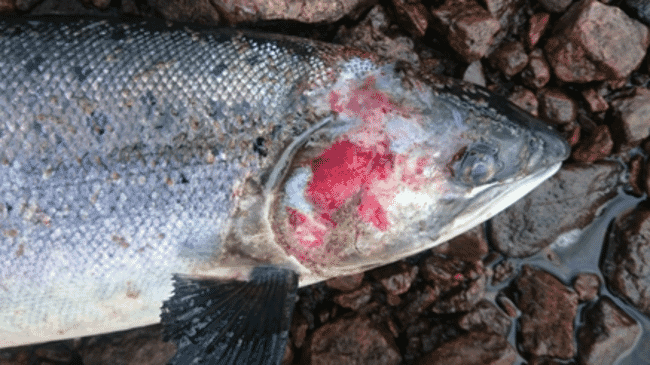
Sea lice, parasites that feed on the skin and fins of fish, pose significant problems for the salmon farming industry. The damage they cause not only affects the welfare of farmed fish but also has implications for wild salmon populations. Current treatments to control sea lice infestations, which cost the industry over £700 million annually, are often expensive, environmentally harmful, and can negatively impact animal welfare.
The new study offers insights into how coho salmon, a species related to Atlantic salmon, naturally defend themselves against these parasites. An international team of researchers included three scientists at the University of Stirling’s Institute of Aquaculture in the Faculty of Natural Sciences – Dr Rose Ruiz-Daniels, Dr Sean Monaghan and Professor James Bron. Researchers have identified that a particular type of skin cell, the keratinocyte, plays a crucial role in initiating a response that helps coho salmon resist sea lice.
Dr Rose Ruiz-Daniels, a lecturer in aquaculture genomics at the Institute of Aquaculture, commented, “We used new techniques to sequence cells of different salmonid species to discover how some can expel sea lice, forging fresh pathways for biotechnological solutions.”
Unlike Atlantic salmon, which are highly susceptible to sea lice, coho salmon exhibit a natural resistance. When sea lice attach to coho salmon, they trigger localized swelling, a response that is minimal in Atlantic salmon. The study, which was led by scientists at the Roslin Institute and Norway’s Nofima, focused on the cellular and molecular mechanisms behind this difference in resistance.
The research involved exposing both Atlantic and coho salmon to sea lice and analysing the gene expression patterns in their skin cells using a novel RNA sequencing method. The findings indicate that keratinocytes in the skin of coho salmon play a central role in their defence, directing cell movements that can encapsulate and remove the parasites. The study also highlighted that sea lice can compromise the immune system of Atlantic salmon.
The insights gained from this research suggest that it may be possible to enhance the resistance of Atlantic salmon to sea lice through gene editing techniques.
Dr Sarah Salisbury, postdoctoral research fellow at the Roslin Institute, explained, “We were able to pinpoint with unprecedented resolution the types of cells responsible for the skin swelling response used by coho salmon to resist sea lice, as well as those cells targeted by sea lice in Atlantic salmon to weaken this host species. These insights pave the way for the development of transformative therapies to counter this devastating parasite.”
The study, titled ‘Keratinocytes drive the epithelial hyperplasia key to sea lice resistance in coho salmon’, was published in the journal BMC Biology and was funded by the Norwegian Seafood Research Fund (FHF) and BBSRC. Collaborators included researchers from the University of Santiago de Compostela in Spain, the University of Prince Edward Island in Canada, Deakin University in Australia, and Benchmark Genetics.




